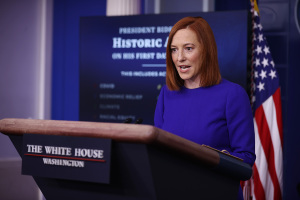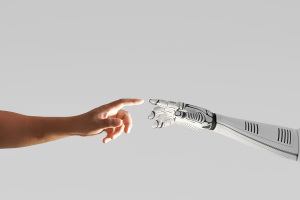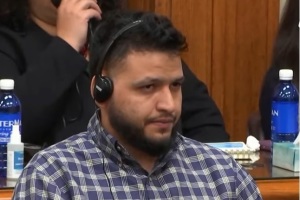Advertising Our Children to Death
Advertising has become a key defining characteristic of contemporary society. It’s everywhere. Schools used to be one of the few places that weren’t bombarded by advertisers. But even that is changing with the introduction of Channel One and BusRadio.
Channel One is a “news” show shown to millions of students in middle and high school. However, Channel One, as critics argue, is less of a news program and more of an entertainment program that coerces unsuspecting young people.
The counterpart to Channel One is BusRadio, which supposedly allows children to enjoy the benefits of radio as they travel to and from school on a bus. While BusRadio executives concede that the show is geared toward entertaining the students, it supposedly incorporates educational content and safety awareness messages. But many critics think that, like Channel One, this is just another ploy by the corporate giants to tap into the teenager consumer market.
Introduced in 1990, Channel One is a news program of sorts that shows 12 minutes of programming to more than 12,000 schools across the country. The program is sent via satellite early in the morning, where it is taped and then shown to children at the school’s discretion. Proponents of Channel One argue that it provides students in impoverished areas with access to better technology that will facilitate the “learning process.” Critics, however, accuse Channel One of being more harmful than helpful through its discreet and indiscreet forms of advertising. Indeed, in his comprehensive analysis of Channel One, Professor William Hoynes reveals that only slightly more than half of Channel One’s air time is devoted to news content. Features and profiles not related to breaking news events constitute 57% of news time, meaning that after sports, weather and plane or train crashes are subtracted, the figure is around 20%. The remainder of the show is made up of ads, a “Pop Quiz” section, contests and activities and the music and banter that serve as filler. This means that in the course of a school year, students spend the equivalent of six school days watching Channel One, with another day lost to the commercial breaks that occur during every show.
One study found that advertisers such as Nabisco, Pepsi, Proctor & Gamble (with ads for Clearasil skin cream and Pringles potato chips), movie studios and the U.S. Armed Forces (for recruitment) pay premium rates of up to $200,000 for a 30-second spot to reach Channel One’s audience of 8 million students. In fact, the channel’s advertisement to media buyers states that the show “is viewed by more teens than any other programme on television.” Another industry advertisement refers to the channel as “the smartest place to reach tweens,” a term for children between 9 and 14 years of age. “Many children and especially teens are difficult for advertisers to reach,” said Gary Ruskin, executive director of the public advocacy group Commercial Alert. “So the product hawkers are going where the kids are—where they are forced to be, in school.”
In addition to luring teens through advertisements, Channel One also contains what many critics consider to be inappropriate content targeted toward unsuspecting teenagers. In testimony before a Senate Committee, Phyllis Schlafly of Eagle Forum expressed concern that “commercials are the hard-sell ads for movies and television shows that contain vulgarities, obscenities, blasphemies, sexual innuendoes, or violence.” According to Schlafly, the ads induce students to see the movie over the weekend so they can answer a question the following week and win fabulous prizes.
Channel One even advertises PG-13 movies to pre-teens in middle school. For example, in a recent show, Channel One featured actress Rosario Dawson who was there to promote her movie Rent. Dawson claimed that the movie is entertaining for the whole family, but she did not mention that the R-rated movie dealt with topics such as homosexuality and AIDS, which might not be suitable for young audiences. Not surprisingly, numerous national educational groups oppose Channel One, including the National Parent Teacher Association, the American Federation of Teachers, the National School Boards Association and the National Education Association.
BusRadio is a new radio show that will begin in the fall of 2006. Unlike Channel One which claims to be educational, BusRadio’s website clearly states that while “kids across the country will be listening to the dynamic programming of BusRadio,” advertisers will have a “unique and effective way to reach the highly sought after teen and tween market.” BusRadio plays music, public-service announcements, contests and ads, all aimed at kids. For each hour of programming, 44 minutes will be set aside for music, six for public-service announcements, two for contests and eight for advertising. According to its website, by September 2006, BusRadio will be heard by 100,000 students between the ages of 6 and 18 on 850 school buses in Massachussetts. By 2007, BusRadio hopes to have a base of one million students.
Cover Concepts, the corporation that owns BusRadio, is a multi-million dollar enterprise that relies on advertising for profit. It presently reaches 43,000 schools and 30 million children by providing schools with free supplies, namely book covers but also stickers, posters, calendars, bookmarks and other materials. The catch is that each has an advertisement on it from various companies such as McDonald’s, Nike and Calvin Klein. Whereas in traditional print media a client gets a 4% to 5% brand recall, Cover Concepts advertisers get up to 74% at the end of the school year. For their free supplies, schools provide Cover Concepts with demographic data on students’ family incomes, gender, age and race. This means that Cover Concepts can target specific groups to meet the demands of its advertisers.
The bombarding of our young people by corporate America is not healthy. Gary Ruskin is concerned that the companies are using “the compulsory education law to compel kids to listen to ads.” BusRadio claims that it aids in making kids quieter and more well-behaved on buses. But Ruskin says, “So what? They’d be quiet if we gave them cigarettes, but that doesn’t mean we should.”
This article originally appeared on September 28, 2006.
_________________________________________________
Constitutional attorney and author John W. Whitehead is founder and president of The Rutherford Institute. He can be contacted at johnw@rutherford.org. Information about the Institute is available at www.rutherford.org.




























